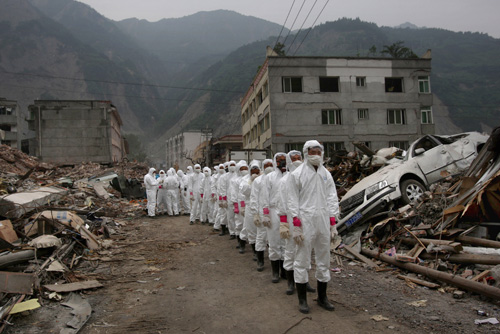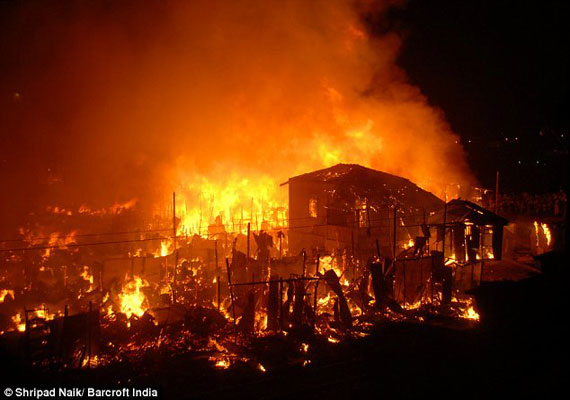
Flooding in Mozambique has killed at least 36 people and displaced nearly 70,000, the United Nations said Friday, as residents braced for a fresh storm surge.
"A total of 26 persons have died in (the worst affected southern province of) Gaza alone, with the nationwide death toll at 36," the UN in Mozambique said in a statement.
The number of displaced people now stood at 67,995 while nearly 85,000 have been affected by the raging waters in recent days, the UN said, urging donors to urgently make more funds available "to help deal with this emergency" in the impoverished southeast African nation.
Meanwhile, severe flooding continued to spread across the south of the country with the Mozambique government, international agencies and neighbouring South Africa scrambling to ease the humanitarian disaster.
The floods are a result of week-long torrential rains in South Africa and Zimbabwe that swelled the Limpopo river forcing an orange alert on January 12, when the toll began.
But the full impact of the rains were only now being felt.
An AFP reporter on the scene saw thousands of residents who had fled their homes stuck on road sides leading out of devastated towns, surviving on scarce aid and in some cases forced to eat grasshoppers.
Their plight was only expected to worsen as intense rains were forecast for the weekend.
In the tourist coastal city of Xai-Xai, spared until Friday, up to eight metres of water (26 feet) was expected to hit.
"The water is coming into the city. It is just starting. Some roads in the lower part of town are under water," said government spokesman Joao Carlos. "The situation is not very good."
Severe flooding in Xai-Xai would sever the main road connection between the north and south of the country.
"Private and commercial services have been evacuated from the lower parts of the city to higher areas," said police spokeswoman Sylvia Paolo.
"The population obeyed the calls for them to leave risk areas."
Initial evacuations of around 30,000 people in the southern region who did not hear or ignored flood warnings were under way.
Neighbouring South Africa, where the flood waters have killed at least 12 people in the past week, dispatched two military helicopters and divers on Friday to assist with the evacuations in Mozambique.
A South African Hercules C-130 military transport plane was also due to take off late on Friday with a contingent of doctors, nurses and social workers to attend to the flood victims.
"The operation will be more focussed on rescuing and saving lives," Brigadier-General Xolani Mabanga of the South African National Defence Force (SANDF) told AFP.
The scale the of the disaster was already evident in the affected towns and cities.
Towns such as Chokwe in the province of Gaza were submerged, with thousands of homes destroyed and key services such as banks, shops, schools and hospitals affected.
There were also reports of looters breaking into submerged stores.
"Eight people were arrested in the Chokwe district," said Paolo. "They stole beer, drinks, oil and rice from shops."
The suspects were taken to a nearby town because " they can't be held in Chokwe. All prisoners have been transferred to higher zones," she said.
In the capital Maputo several bridges, roads and schools were seriously damaged.
The price tag from the flood devastation in the capital alone is expected to be around $30 million, according to UN agencies.
Humanitarian workers are now racing to provide food and shelter before cholera, malaria, pneumonia and diarrhoea grip those left homeless by the floods.
Agencies are also rushing to supply three mobile hospital tents, 15,000 mosquito nets and various other provisions.
According to the National Water Directorate, nine rivers in five basins were above alert levels, including the Zambezi and the Limpopo.
The deluge also wreaked havoc in South Africa where some 15,000 crocodiles escaped after flood gates were opened at a breeding farm in the Limpopo area.
Friday 25 January 2013
http://www.modernghana.com/news/441719/1/mozambique-floods-kill-36-displace-tens-of-thousan.html?utm_source=feedburner&utm_medium=feed&utm_campaign=Feed%3A+MoviesNews+%28Nigeria+Movies+News%29










